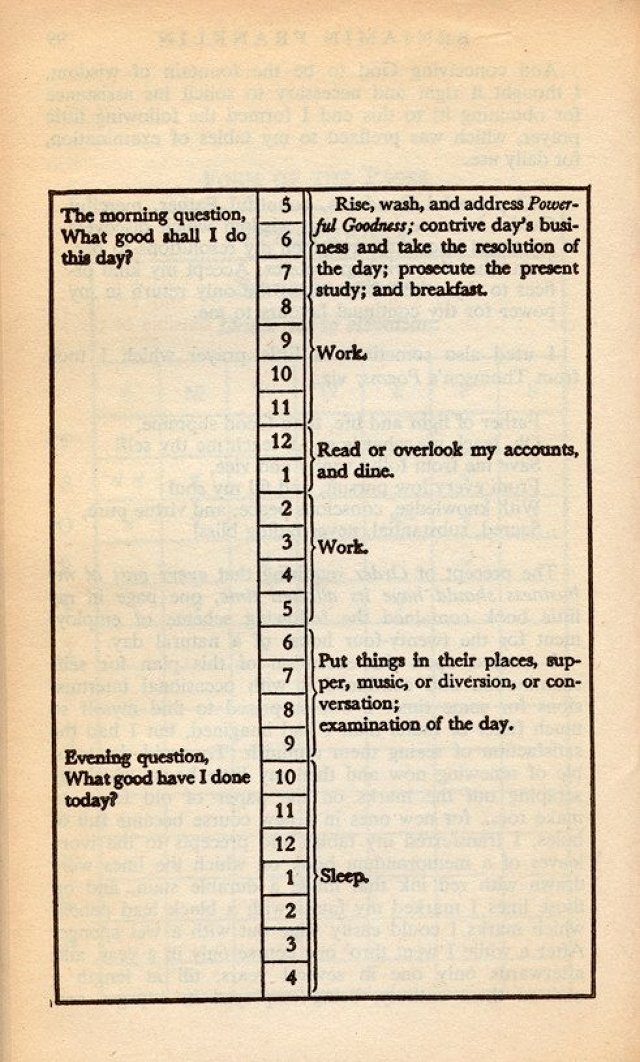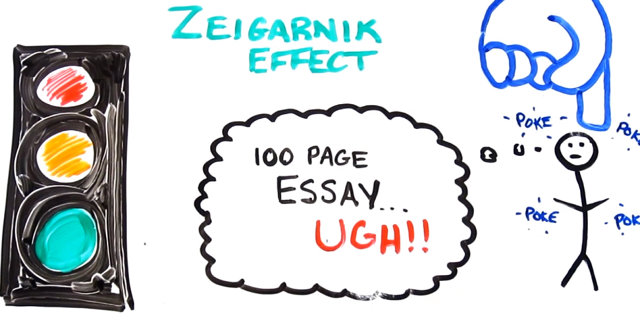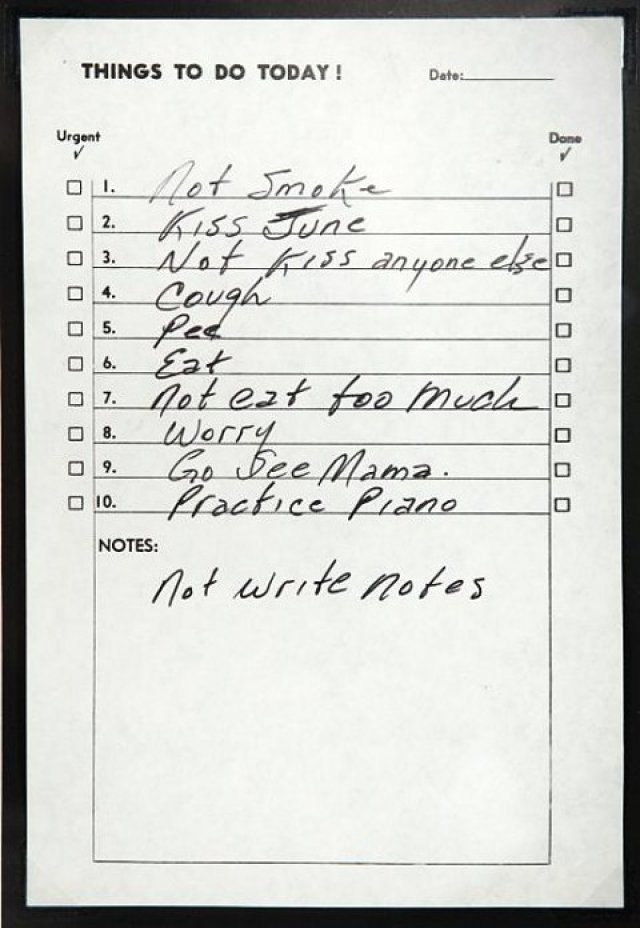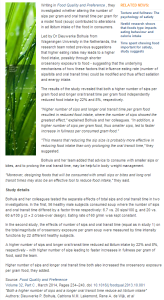Governments won’t be able to afford you if you are over 70 and can’t work
You will need to be productive
The current health market can only extend your life, but not your productive life
The new health system will have to do both if we are to preserve our standard of living
Sure, people will need to die sometime, but it’s the when, how and why they die that needs to evolve
This health system aims to deliver on this
Australia is well positioned to lead the world on this
Excitement
Category Archives: healthy habits
Why diets fail…
That diets fail seems to be the only uncontested fact in the world of nutrition.
Why do you suppose that is?
Well the answer is pretty obvious when you think about it. Its because the idea of normal that people revert to after a diet is pathological.
The modern idea of a “normal” diet is actually sick. Too much food. And too much of the wrong, highly processed food.
The public health challenge is to change the idea of normal, because the current idea is killing us.
Eat only twice per day. No refined carbohydrates. Minimal meat consumption.
As Pollan says: Eat food, mainly plants, not too much.
Brilliant!
On To-Do lists…
Source (via @LisaPettigrew): http://www.fastcompany.com/3021379/work-smart/the-amazing-history-of-the-to-do-list-and-how-to-make-one-that-actually-works
THE AMAZING HISTORY OF THE TO-DO LIST–AND HOW TO MAKE ONE THAT ACTUALLY WORKS
PUT DOWN THAT PEN AND PAPER AND READ THIS FIRST. BONUS: THE REAL TO-DO LISTS OF BEN FRANKLIN AND JOHNNY CASH.
When I was a kid, I read a book called The Listmaker. It’s about a young girl who uses lists to organize and make sense of her life. At the time I didn’t read any more into it besides the fact that this was an odd hobby for a pre-teen girl to spend so much time on.

Now, although I don’t remember the book that well, I do see much more significance in the humble list–especially after researching where they come from and why we make lists.
As I researched this post I realised how hard it is to pinpoint the origin of something as simple and widespread as the list (to-do or otherwise), but I did find out some interesting stories about how lists have been used in the past and why we find them useful in everyday life.
WHY DO WE MAKE LISTS AS HUMANS IN THE FIRST PLACE?
Philosopher and novelist Umberto Eco is a big fan of lists and has some fascinating ideas about why they’re so important to humans:
The list is the origin of culture. It’s part of the history of art and literature. What does culture want? To make infinity comprehensible… And how, as a human being, does one face infinity? How does one attempt to grasp the incomprehensible? Through lists…

Umberto explained in an interview that lists are often seen as relics of primitive cultures–simplistic devices that don’t belong in our modern day and age. However, the simple form of the list prevails again and again over time, because, as Umberto says, it has “an irresistible magic.”
We pack all the madness and ambiguity of life into a structured form of writing. In short making lists is a great way to increase our overall happiness and feel less overwhelmed.
Not only that, but we also form and challenge definitions of the things around us by making lists of their characteristics. For instance, if we were to describe an animal to a child, we would do so by listing characteristics like color, size, diet and habitat. Regardless of whether this matches the scientific definition of the animal or not, that’s how we make sense of it.
The list is the mark of a highly advanced, cultivated society because a list allows us to question the essential definitions. The essential definition is primitive compared with the list.
BENJAMIN FRANKLIN, THE GODFATHER OF THE TO-DO LIST?
Benjamin Franklin is a great example of someone known for using lists to encourage his own self-improvement. He famously detailed a thirteen-week plan to practice important virtues such as cleanliness, temperance, etc. Each day he tracked his progress on a chart.
Benjamin also set himself a strict daily routine, which included time for sleeping, meals and working, all set for specific times of the day. Unfortuantely, the demands of his printing business made it difficult for him to always stick to his routine, but this image shows how he aimed to spend his time:

LISTS FOR PRODUCTIVITY
These days, we use lists for productivity as much as anything else: shopping lists, reminders, planning for events, and the to-do list are all variations on a productivity-based list that we use to help us get past procrastinating.
The to-do list in particular is one that we spend a lot of time and energy on perfecting. Somehow, we don’t seem to struggle when it comes to making a shopping list and buying everything on it, but getting the tasks on our to-do list done is a whole other ball game.
4 TOP TIPS TO WRITE A TO-DO LIST THAT WILL ACTUALLY HELP YOU GET THINGS DONE
Looking at the history of lists and how they’re used, we can glean some insights about how to create a to-do list we can actually complete.
1. Break projects into tasks, don’t succumb to the Zeigarnik effect
We kind of have a reminder system built-in to our minds that nags us about unfinished tasks, called the Zeigarnik effect. It sounds pretty cool that we already have this, but it’s actually not that reliable or healthy for us.

What really happens is that there’s a disconnect between our conscious and unconscious minds–the unconscious mind can’t plan how to finish the task, but it gets annoyed with the feeling of it being unfinished. To shake off that feeling, it nags the conscious mind with reminders about the task–not to finish it, but simply to encourage us to make a plan.
If you’ve heard of David Allen’s GTD method, you’ll be familiar with his concept of “next steps,” which is pretty much the same thing. It’s the process of breaking down a project or task into smaller tasks, and planning which one will be the next step towards completing the whole thing.
This abates the nagging of the unconscious brain, as it’s satisfied that at some point we’ll get onto that task, and we know exactly how we’ll do it.
Maria Popova at Brain Pickings says the essentials of creating these do-able next steps are to make “a few very specific, aactionalbe, non-conflicting items.”
2. Prioritize ruthlessly
Maria’s post on the history of the to-do list also describes the story of a psychologist who gave a talk at the Pentagon about managing time and resources. Before the talk began, the psychologist asked everyone in the group to write a summary of their strategic approach in 25 words.
Apparently, 25 words was too little for the men to express their strategies, and the only response came from the single woman in the group, whose summary read as follows:
First I make a list of priorities: one, two, three, and so on. Then I cross out everything from three down.
I’ve heard this approach suggested before in various places, and it always reminds me of the CEO I worked with at my previous company, who had a Post-It on his desk that read, “prioritize until it hurts.” in other words, learning the powerful skill of saying no. I’m not sure if he ever managed to do that, but I liked the approach.
To-do lists invariably crop up when we have so many things to do that we can’t keep track of them all in our heads (Aha! We’re back to Umberto’s thoughts on how lists help us to create order from the chaos of our lives!). Which means that we end up with lists far too long for us to complete.
Prioritizing ruthlessly seems to be the only way to actually get done what’s most important in the little time that we have.
3. “Plan ahead”–advice for which Charles Schwab paid $25,000
Here’s another cool story of how to-do lists evolved in the workplace:
Almost 100 years ago, the president of the Bethlehem Steel company in the USA was Charles M. Schwab. His company was struggling with inefficiency and Schwab didn’t know how to improve it, so he called in Ivy Lee, a well-known efficiency expert at the time.
Lee agreed to help the company, with his fee being whatever Schwab felt the results were worth after three months.
Lee’s advice to each member of the company’s management team was to write a to-do list at the end of each day, which consisted of the six most important tasks to be done the following day. Then they were told to organize the list based on the highest priority tasks.
The next day, the employes worked through the list from top to bottom, focusing on a single task at a time. At the end of the day, anything left on the list would get added to the top of tomorrow’s list when the employees once again planned for the following day.
As the story goes, the company was so much more efficient after three months that Schwab sent a check to Lee for $25,000.
In your own planning, you can take Lee’s advice for free and use the night before to plan your workday. Setting out the most important tasks you want to complete the following day will help you to avoid time-wasters and distractions by knowing what to work on immediately.
4. Be realistic in your planning
Sometimes it’s nice to know that even our great heroes are fallible. This story about Benjamin Franklin’s struggles to keep up with his daily to-do list shows how important it is to be realistic about how much time we have and what our priorities are.
Franklin was known to be a meticulous tracker of his daily routine and his work towards the virtues he prioritized.
Unfortunately, the demands of his business meant that he didn’t always keep up with his ideal daily routine. He often got interrupted by clients and had to ignore his schedule to meet with them.
He also noticed that some of the virtues he aspired to practice, such as frugality–not wasting anything–took up too much time for him to live life as he wanted to. Preparing his own meals and mending his own clothes all the time, for instance, meant that he didn’t have enough time for business or his side projects.
The result of these conflicting priorities was unhappiness over not completing the tasks he set for himself. As a result, he had to re-prioritize, which is something we should keep in mind.
If we’re struggling to complete our to-do lists on a regular basis (we’ve all been there at some point!), we need to make a change to the list–make it more realistic.
Although a to-do list can be infinite, our time is not. We need to match the tasks we require of ourselves to how much time and energy we can afford to spend on them. This is where prioritizing can really come in handy, as well.
Starting to develop your own, personal daily routine is one of the most powerful ways to become a great list maker. You might find some inspiration from these seven famous entrepreneurs and their routines.
Find a way that works for you
As with pretty much any kind of lifehacking or productivity topic I write about, individual mileage will vary. We all need to take into account our unique situation when experimenting with advice like this. For me, prioritizing and planning the night before has really helped. For you, being realistic might be more useful.
BONUS: JOHNNY CASH’S PERFECT, SEMI-EFFICIENT TO-DO LIST
As a last example, I found a to-do list from Johnny Cash. This wouldn’t necessarily be one we’d advocate to help you become more efficient. But then again, we can’t argue with Johnny Cash’s success, can we?

—Belle Beth Cooper is a Content Crafter at Buffer and Co-founder of Hello Code. Follow her on Twitter at @BelleBethCooper.
This post originally appeared on Buffer, and is reprinted with permission.
MedObs: Govt changed food label system after industry lobbying
It’s clear the algorithm that DoHA established was stuffed if what they say about a glass of water vs chicko rolls is true.
The fact that dairy has held sway indicates the project has been undermined.
Never mind if it ever gets adopted, which is unlikely given AFGC’s mutterings at the press club recently.
Then finally, how much of an impact will food labeling actually have, given all the other drivers of the problem of fundamental overeating. I suspect industry is using food labelling as a straw man to keep the bureaucrats and academics tied up while industry marches on its merry way.
This is a classic case of policy development driven by obsessions with process rather than focus on outcome.
Source: http://www.medicalobserver.com.au/news/govt-changed-food-label-system-after-industry-lobbying
Govt changed food label system after industry lobbying
THE Department of Health and Ageing has admitted it changed how it rated dairy products under a radical new food labelling scheme following lobbying from the industry – but staunchly defended its assessment methods.
In Senate estimates this week, department secretary Professor Jane Halton said the dairy industry had complained about how its products fared in the new star system designed to combat obesity.
“The concern that was raised in respect of the algorithm in respect of dairy was that it didn’t give dairy the right prominence,” she said.
“The [department’s] project group considered in great detail how dairy might be recalibrated. We’ve pulled dairy out and we’ve got different categories now.”
But Professor Halton rejected “in the strongest possible terms” suggestions the formulae were wrong after the Senate heard a glass of water would be rated as less healthy than some junk food products.
“It is highly robust and it has been tested across a large number of foods,” she said of the system.
Other industries had told the department they wanted their products rated “better” but she would not say which.
In a statement, Senator Bridget McKenzie said the new scheme risked sending the message that healthy products like milk and cheese were unhealthy.
“The fact that under this scheme a glass of water is less healthy than a Chiko Roll calls into question the whole basis of the front-of-pack labelling scheme,” she said.
Research showed healthy amounts of dairy were linked to reduced risk of several chronic diseases, including heart disease, hypertension, stroke and type 2 diabetes, she said.
The scheme is expected to have the star ratings on food packaging by mid-2014.
Tags: Public Health, food labelling, diet, obesity, dairy, Diabetes, Obesity, Research,Stroke, Professional News, Chronic
Dubai offers gold for fat during Ramadan…
Good for them…
http://news.sky.com/story/1165863/gold-tips-scales-for-dubais-slimmers
Gold Tips Scales For Dubai’s Slimmers
More than £400,000 worth of gold was dished out to contestants in the Your Weight In Gold campaign, aimed at tackling obesity.

Ahmad al Sheikh took home 63g of gold after losing the most weight
Dubai dieters have been rewarded with gold for losing weight during the Muslim fasting month of Ramadan.
The Your Weight In Gold campaign gave away £474,000 worth of gold to about 3,000 contestants, who won one gram of gold for every kilogramme shed.
Contestants that lost more than five or 10 kg received a greater proportion of gold per kg.
Ahmad al-Sheikh, a 27-year-old Syrian architect, won the top prize of 63 grams of gold, worth £1,700, after he lost 26 kg.
“I actually registered 15 days later in the campaign and was worried at first, because I thought I lost a head start to all the other contestants,” he said.
He added that support from friends and family helped him achieve his goal.
“My friends and colleagues have also been of immense support when they found out I was trying to lose weight, so now I play football once a week and basketball twice every week as well,” he said.
Nearly 17 kg of gold was given away in the competition as more than 17,000 kg were shed by contestants.
Omar Ahmed al Marri, a public-relations executive from Dubai municipality, told The National that the gold was a key motivator in getting people to participate.
“Nobody tries to be healthy,” he said. “So we thought about how we could make them think about it. We found that you have to give them a gift, to motivate them.
“Most of the people, they first of all thought about the gold. And then afterwards, they thought about what they could do for their body.”
FN: Longer oral transit time reduces calorie intake…
Food and drink with longer oral transit time may reduce calorie intake: Study
Designing foods and beverages to be consumed with small sips or bites, and a longer oral transit time, may be effective in reducing energy intake in consumers, say researchers.
Full article clip (copy/paste disabled by website):
Katz slam dunks….
- Used the Harvard Nurses Health Study to develop an algorithm for food healthiness as determined by health outcomes from the study – a GPS for nutrition – CLEVER!
- Offered to do this with Government in the early 2000s but was knocked back
- Developed a proprietary algorithm called ONQI, owned by NuVal
- Choosing higher scoring foods correlates with a lower risk of dying prematurely.
- “The very government agencies that regulate the food supply are extensively entangled with the entities producing our food, from farm to factory. In comparison, we mere eaters of food have very little clout. The government may be just a little too conflicted on the topic of food to be in the business of putting the truth, the whole truth and nothing but the truth on at-a-glance display.
Certainly the big food manufacturers, the makers of glow-in-the-dark snackattackables, should NOT be in the business of nutrition guidance whatever their inclination. That approach makes the fox look like a highly qualified security officer for the henhouse.
Which leaves independent nutrition, and public health experts and private sector innovation. And here we are.
Private-sector innovation often involves intellectual property, trade secrets and patent applications. It involves some entity making an investment and wanting a return. That is all true of NuVal, for better or worse. It wasn’t my plan – it was just the only way to get this empowering system into the hands of shoppers. Of note, the ONQI remains under the independent control of scientists, and not the business.” - This is a terrific strategy – worthy of emulation.
Nutrition Guidance: Who Needs to Know What?
DAVID L. KATZ June 11, 2013
I am writing today about nutrition guidance and who needs to know what to make it useful.
Permit me to disclose right away that I am the principal inventor of the Overall Nutritional Quality Index (ONQI) algorithm, used in NuVal – a nutritional guidance system that stratifies foods from 1 to 100 on the basis of overall nutritional quality: the higher the number, the more nutritious the food. As the Chief Science Officer for NuVal, LLC, I am compensated for my continuous and considerable allocations of time and effort. But it was never supposed to be that way – and the reasons why it is are an important part of this story.
As to why this column now, there are two recent provocations. One is our ongoing work to complete the updated algorithm, ONQI 2.0, and the window that provides into a world of weirder foods than I ever even considered possible. The other is a paper published in the Journal of the Academy of Nutrition and Dietetics a few months back and a more recent exchange of letters related to that article. The article described the advantageous novelties of a nutritional profiling system, such as weighting nutrients for their health effects rather than counting them all the same. But this was less about novelty, and more about NuVal, since the innovations described have long been included in the ONQI.
[See: Debunking Common Nutrition Myths.]
Claims about alleged novelties that were already included in NuVal prompted a letter from my colleagues and me to the journal, which was published along with a response from the original authors. In that response, they acknowledged that the NuVal system included the so-called “novelties” and acknowledged that the ONQI is, to date, the only nutritional profiling system shown to correlate directly with health outcomes. So the real concern, the letter went on, is that the ONQI algorithm is proprietary and the details are not fully in the public domain.
Which brings us back to why NuVal is a private and proprietary system in the first place and whether or not it matters that certain details of the algorithm – which populate 25 pages or so of computer code written in a language called SAS – are not on a billboard. Why isn’t the ONQI public rather than private, and who really needs to know every detail of the algorithm for it to be useful? (All of the nutrients included in it, and the basic approaches used to generate scores, have been published.)
The ONQI, and NuVal, are a private sector innovation because the public sector said: no thanks. In 2003, I was privileged to be a member of a group of 15 academics invited to Washington, D.C. by then-Secretary of Health Tommy Thompson. A Food and Drug Administration task force had been formed to guide efforts related to the control of rampant obesity and diabetes, and we were a part of that effort. We gathered in a conference room with Secretary Thompson, the FDA Commissioner (Mark McClellan) and others, including the surgeon general and the heads of the National Institutes of Health and the Centers for Disease Control and Prevention.
[See: Why Aren’t Americans Healthier?]
We were each given one three-minute turn to offer up one good idea the FDA and other federal agencies might use to help combat the ominoustrends in diabetes and obesity. I used my turn to describe, in essence, the project that later became the ONQI. I suggested that the secretary might convene a totally independent group of top-notch experts in nutrition and public health, perhaps under the auspices of the Institute of Medicine.
The group should have no political or industry entanglements and should be allowed to work for as long as it took to convert the best available nutrition science and knowledge into a guidance system anyone could understand at a glance. I was thinking, in essence, of the equivalent of GPS for nutrition, so that no one trying to identify a better food in any given category would get lost, confused or misled by Madison Avenue.
[See: 10 Things the Food Industry Doesn’t Want You to Know.]
I waited two years for the feds to do something along these lines. When they didn’t, I decided to undertake the project myself, with the backing of Griffin Hospital in Derby, Conn. – a Yale-affiliated, not-for-profit community hospital, which owns the ONQI algorithm to this day. Other than this being a private rather than federal endeavor, all other aspects of the project were just as proposed to the U.S. Secretary of Health. When we completed the algorithm, I offered it again to the FDA. A scientist at the agency recommended a private-sector approach if I hoped to live long enough to see the system do its intended good.
Why didn’t the feds take on the project? We can all conjecture. I suspect it has something to do with the story Marion Nestle told us all in Food Politics, and the stories we routinely hear about the Farm Bill from the likes of Michael Pollan, Mark Bittman and others. The very government agencies that regulate the food supply are extensively entangled with the entities producing our food, from farm to factory. In comparison, we mere eaters of food have very little clout. The government may be just a little too conflicted on the topic of food to be in the business of putting the truth, the whole truth and nothing but the truth on at-a-glance display.
[See: Seeking a More Perfect Food Supply.]
Certainly the big food manufacturers, the makers of glow-in-the-dark snackattackables, should NOT be in the business of nutrition guidance whatever their inclination. That approach makes the fox look like a highly qualified security officer for the henhouse.
Which leaves independent nutrition, and public health experts and private sector innovation. And here we are.
Private-sector innovation often involves intellectual property, trade secrets and patent applications. It involves some entity making an investment and wanting a return. That is all true of NuVal, for better or worse. It wasn’t my plan – it was just the only way to get this empowering system into the hands of shoppers. Of note, the ONQI remains under the independent control of scientists, and not the business.
[See: Mastering the Art of Food Shopping.]
Which leads us back to the second question: Is it a problem for a system like this to be a private-sector innovation? Who, really, needs to know every detail of such an algorithm?
Consider that if you are shopping for a car, you do need to know if it comes with anti-lock brakes or all-wheel drive. But to decide if these are working for you, you don’t need engineering blueprints; you just need to drive in the snow. When shopping for a smartphone, you may want to know if it has GPS. But you don’t need the trigonometry equations on which the GPS is based to determine if it works; you just have to see if it helps you get where you want to go.
Nutrition guidance in general, and NuVal in particular, are just the same. What are the exact formula details? Who cares. We routinely rely on tools based on math and engineering most of us don’t understand – but we don’t need all that input to know if the tools are working for us. We just need the output. We need to be able to use them. People using NuVal have lost more than 100 pounds, and even over 200 pounds. Choosing higher scoring foods correlates with a lower risk of dying prematurely. More than 100,000 scores are on public display in 1,700 supermarkets nationwide. The ONQI is at least as transparent as any car or smartphone or computer.
[See: The No. 1 Skill for Weight Management.]
Let’s acknowledge: If you are reading this on a computer screen, neither of us truly understands the engineering involved in me writing it, using word processing software, attaching it to an email and sending it to my editor at U.S. News & World Report so she could post it in cyberspace, where you found it. But we do know it worked.
We rely on private-sector innovation for a lot of important jobs, and even many that put our safety on the line. The private sector makes our cars and planes. We seem to be comfortable using these without scrutinizing patent applications. The private sector makes our computers, and smartphones and GPS systems, and we can tell whether or not these work, even if we don’t know how.
Why, then, is nutrition guidance different? The answer, I believe, is politics, profits and the inertia of the status quo. We are accustomed to vague nutrition guidance from conflicted sources, and those same sources are apt to imply there is something wrong with private-sector innovation and the intellectual property issues that come along with it. But if those issues don’t undermine the cars, and planes and navigation systems that get us from city to city and coast to coast, it’s not at all clear why they should be a problem when navigating among choices in a supermarket aisle.
[See: The Government’s MyPlate Celebrates Second Birthday.]
As a scientist, and not a businessperson, my preference would be to put the ONQI on a billboard for all the good it would do. But on this, I must defer to the businesspeople who have made the relevant investments and are entitled to safeguard potential returns. As for the scrutiny that all advanced systems should get, the ONQI has been shared with scientists at leading universities and health agencies around the world – but for private assessment and use rather than public display. Others like them who want to review the program need only ask.
We should all care that the military-industrial establishment seems opposed to putting the blunt truth about nutritional quality, as best we know it, on at-a-glance display. We should care that federal authorities responsible for nutrition guidance are also responsible, if only indirectly, for food politics and supply-side profits. That story may lack novelty. It may be old news. But it is nonetheless something everyone who eats does need to know – engineering blueprints not required.
Because in health, less is more…
When we look back at contemporary health systems 50 years from now, we will consider them to be an technologically indulgent folly of grand proportions, driven by an imperative to deliver more and more complex care in order to justify higher and higher costs.
In a fee-for-service context, elaborate technologies justify higher costs. An elective angiogram costs $25,000. If this had to be paid by individuals, there would be no interest in conducting them with the frequency that they are performed today.
Perhaps this is why Singapore, with its health savings accounts with health costing around 4% of GDP (achieving the same high outcomes of Australia), lacks the excesses of more universal health systems?
The use of bariatric surgery for obesity is perhaps the most egregious example of this phenomenon. A AU$20,000 – 30,000 procedure is now introducing moral hazard that will undermine attempts to introduce behavioural and lifestyle change i.e. “Why bother changing my lifestyle when I can simply get a lap band to fix me later?”
Pharmaceutical companies are also using this play book with the introduction of their new, highly-specialised, so-called “biologics” to the market, particularly in the cancer area. They are often protein based and extremely difficult to manufacture, but are also very targeted. Funders are responding to this threat with value-based payment schemes where by the drug company only gets paid if the treatment succeeds.
Current health market settings establish this perverse incentive. Moves to value/outcomes-based care will remedy these perversities, providing incentives for activities that reduce care costs. In such an environment, the cheapest interventions also become the most profitable.
Home delivered broccoli instead of lap-bands.
CBT SMS’s instead of SSRIs and psychotherapy.
A rapid learning health system instead of a profit yearning sickness market.
Grain Brain Forbes Interview
Interesting interview with the slightly whacky author of Grain Brain. Key take aways:
- Alzheimer’s disease and dementia are directly attributed to effects of carbs on the brain
- Alzheimer’s is a brain manifestation of diabetes
- Our modern diet is deviant, not his diet
- Meat and dairy carry their own risks
- Our diet interacts with and instructs our genome with every mouthful
- Mayo Study: high-carb diet increases risk of cognitive impairment by 3.6 times
- NEJM Study: mild (sub-clinical) BSL elevation still carried significantly higher dementia risk
- “Dementia is our most-feared illness, more than heart disease or cancer,” Perlmutter says. “When you let Type 2 diabetics know they’re doubling their risk for Alzheimer’s disease, they suddenly open their eyes and take notice.
- Gluten is addictive – it takes a couple of weeks to escape withdrawal
Source: http://www.forbes.com/sites/nextavenue/2013/11/14/what-grain-is-doing-to-your-brain/
mHealth mediated exercise prescriptions work
- mobile technologies improve outcome measures associated with exercise interventions when compared to those interventions alone
- not definitive, but certainly encouraging
Abstract: http://www.biomedcentral.com/1471-2458/13/1051/abstract
Provisional paper (PDF): Lifestyle interventions
mHealth improves risk profile in cardiovascular disease, type 2 diabetes patients
November 8, 2013 | By Greg Slabodkin
A provisional article published in the peer-reviewed journal BMC Public Health suggests that mHealth technology supporting exercise prescription interventions can be effective.
The findings are based on a Canadian study of 149 adults with at least two metabolic syndrome risk factors, one group using the intervention and one control group.
“Mobile health technologies have proved to be a beneficial tool to achieve blood pressure and blood glucose control in patients with diabetes,” argue the authors, who are currently completing their analyses and will be submitting their data for publication in the next few weeks. “These technologies may address the limited access to health interventions in rural and remote regions. However, the potential as a tool to support exercise-based prevention activities is not well understood.”
The study was undertaken to “investigate the effects of a tailored exercise prescription alone or supported by mobile health technologies to improve metabolic syndrome and related cardiometabolic risk factors in rural community-dwelling adults at risk for cardiovascular disease and type 2 diabetes,” states the article. The authors hypothesized that the primary outcome, systolic blood pressure, and secondary outcomes would be improved in both groups, but to a greater extent in the mobile health intervention group at 12 weeks and that these changes would be better maintained at 24 and 52 weeks in the intervention group with mobile health support, compared with the active control group.
The results of the study “will contribute to the current literature by investigating the utility of mobile health technology support for exercise prescription interventions to improve cardiometabolic risk status and maintain improvements over time, particularly in rural communities,” concludes the provisional article, which serves as a protocol paper.
Study participants were recruited from rural communities in Ontario, Canada. Participants were randomized to either: an intervention group receiving an exercise prescription and devices for monitoring of risk factors with a smartphone data portal equipped with a mobile health application; or an active control group receiving only an exercise prescription.
In addition to the exercise prescription, the intervention group received a mobile health technology kit for self-monitoring of biometrics and physical activity. The kit included a smartphone (Blackberry Curve 8300 or 8530) equipped with Healthanywhere health monitoring app (Biosign Technologies), a Bluetooth-enabled blood pressure monitor (A & D Medical), a glucometer (Lifescan One Touch Ultra2) with Bluetooth adapter (Polymap Wireless) and a pedometer (Omron).
Nevertheless, a recent study in the Journal of Medical Internet Research found that although mobile health interventions are effective in promoting physical activity, their degree of validity reported in studies is unclear.
Using the RE-AIM (reach, effectiveness, adoption, implementation, and maintenance) framework, the review revealed a recent increase in studies conducted to determine the effectiveness of mHealth interventions for the promotion of physical activity. Yet, quantity, not quality, seems to prevail, the authors argued.
To learn more:
– read the article in BMC Public Health
